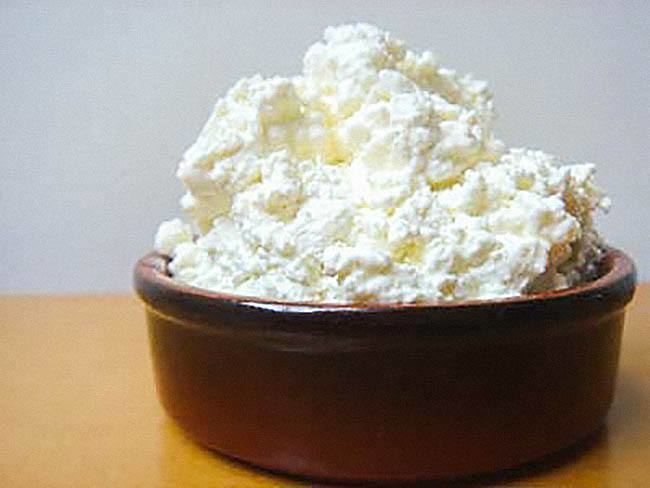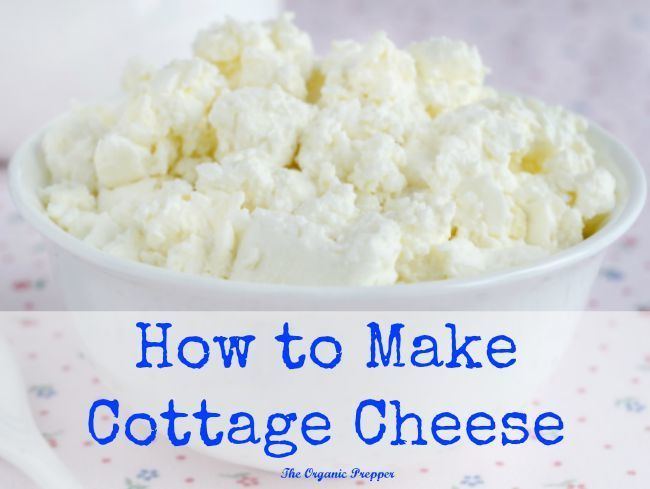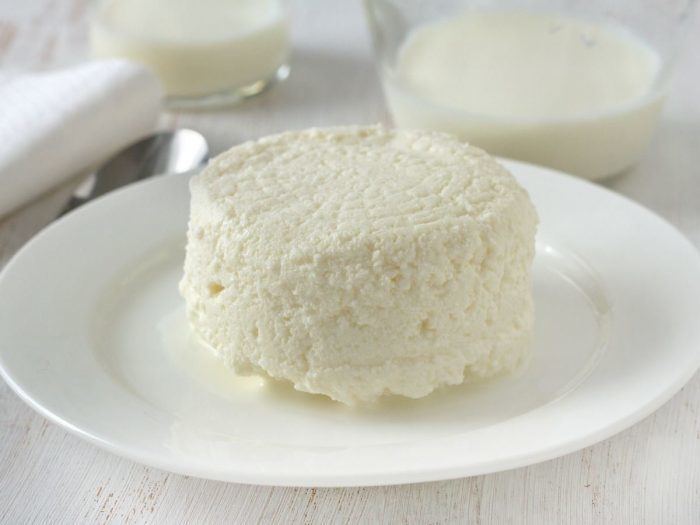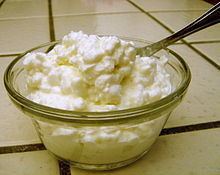Energy 412 kJ (98 kcal) Sugars 2.67 g Protein 11.12 g | Carbohydrates 3.38 g Fat 4.30 g Vitamin A equiv.beta-carotene (5%)37 μg(0%)12 μg | |
 | ||
Similar | ||
Making cottage cheese
Origin

The first known use of the term "cottage cheese" dates back to 1831 and is believed to have originated because the simple cheese was usually made in cottages from any milk left over after making butter.
Manufacture

Cottage cheese is drained, but not pressed, so some whey remains and the individual curds remain loose. The curd is usually washed to remove acidity, giving sweet curd cheese. It is not aged or colored. Different styles of cottage cheese are made from milks with different fat levels and in small-curd or large-curd preparations. Cottage cheese which is pressed becomes hoop cheese, farmer cheese, pot cheese, or queso blanco.
Curd size

Curd size is the size of the chunks in the cottage cheese. The two major types of cottage cheese are small-curd, high-acid cheese made without rennet, and large-curd, low-acid cheese made with rennet. Rennet is a natural complex of enzymes that speeds curdling and keeps the curd that forms from breaking up. Adding rennet shortens the cheese-making process, resulting in a lower acid and larger curd cheese, and reduces the amount of curd poured off with leftover liquid (whey). Sometimes large-curd cottage cheese is called "chunk style."
Consumption

Cottage cheese can be eaten in a variety of different ways: by itself, with fruit and sugar, with salt and pepper, with fruit puree, on toast, with tomatoes, with granola and cinnamon, in salads, as a chip dip, as a replacement for mayonnaise in tuna salad or used as an ingredient in recipes such as jello salad and various desserts. Cottage cheese with fruit such as pears, peaches, or mandarin oranges is a standard side dish in many "home cooking" or meat-and-three restaurants' menus in the United States.
Nutrition

A 113-g (4-oz) serving of 4% fat product has about 120 calories, 5 g fat (3 g saturated), 3 g carbohydrates, and 12 g protein. It also contains about 500 mg sodium, 70 mg calcium, and 20 mg cholesterol.
Some manufacturers also produce low-fat and nonfat varieties. A fat-free kind of a similar serving size has 80 calories, 0 g fat (0 g saturated), 6 g carbohydrates, and 14 g protein.
Cottage cheese is popular among dieters and some health food devotees. It is a favorite food among bodybuilders, runners, swimmers and weightlifters for its high content of casein protein (a longer-lasting protein) while being relatively low in fat. Pregnant women are advised that cottage cheese is safe to eat, whereas some cheese products are not recommended during pregnancy.
